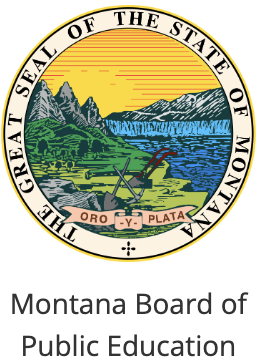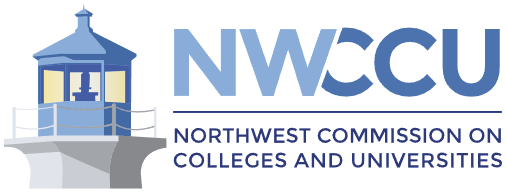About IPSL
The Indigenous Perspectives in School Librarianship was a grant project funded by the Institution of Museum and Library Services (RE-246303-OLS-20) with two goals: to revise the fully online 21-credit library media certificate program at Montana State University to include Indigenous perspectives and culturally responsive teaching; and to train 30 educators to be culturally responsive school librarians in their communities.
In communities that serve Indigenous students access to quality education requires “a stable, well prepared, and culturally responsive workforce that is integrated into the community life” (Burton et al., 2013). To encourage retention, researchers suggest that educators need support to understand and engage with the cultural context of their schools and be prepared for the specific demands of teaching in schools that serve Indigenous students (Kaden et al, 2016), and there is evidence that there is a need for such knowledge (Battiste, 2013; Brayboy & Castagno, 2009; Kaomea, 2005). Yet such teachers are resistant to adopting and applying culturally relevant education (CRE) due to the “absence of a range of practical know-how, usable pedagogical models, and high-quality resources” (Neri et al., 2019, p. 211) and a lack of awareness of the presence of Indigenous students in their classrooms and libraries (Haynes Writer, 2002; Higgens, Madden, & Korteweg, 2013).
There are many frameworks for culturally responsive pedagogy, and no one framework can serve all Indigenous students or all educators, regardless of the demographic makeup of their schools. IPSL adopts Aronson and Laughter’s (2016) definition of culturally relevant education as a collection of approaches for culturally relevant teaching that include instruction as well as curriculum design and implementation.
As a result, the goal is not to prescribe what school librarians should do, but to provide them space to reflect on their teaching so that they can emerge not with a single set of answers but with a greater appreciation for the implications of teaching within a culturally responsive framework and a set of tools to start with.
Although designed for current educators who are preservice librarians, the curriculum designed for the 100% online Montana State University Library Media Certificate Program can be adapted to multiple contexts, such as in person programs and professional development. The goal of the IPSL project is to provide inspiration and materials that faculty can adapt to fit the context of their learning environment and population.
Curriculum Design
STEP 1: The curriculum design process started with the 21-credit library media certificate (LMC) program at Montana State University. The program was examined wholistically to ensure that each CAEP / ALA / AASL School Librarian Preparation Program Standard, Indian Education for All (IEFA) Essential Understanding, and Alaska Standards for Culturally Responsive Educators was included in the program.
As a result of this analysis some changes were made to the program:
- The 3-credit practicum that had been taken as a capstone at the end of the program was changed into a 1-credit practicum that is taken three times across the three semesters of the program. Instead of requiring X hours of time in the school library, candidates were asked to engage in personalized professional growth activities. This redesign allowed candidates who are the librarian in their school, or working in a school with no librarian, to still complete the practicum and master program standards.
- EDCI 545: Cataloging & Classification was removed as a core program requirement. Two modules of the course were moved into EDCI 548: Collection Development for School Librarians to ensure that candidates receive basic instruction in classification and library organization systems. However, it was determined, based on standards and anecdotal evidence that today’s school librarians rarely need a full training course in cataloging. On the job training, or continued education, is available when needed.
- EDCI 522 was renamed Information Literacy Instruction and was revamped to focus less on reference transactions and more on how school librarians provide instruction in information literacy, digital citizenship, and research.
STEP 2: The course description and learning outcomes were revised for each course in the program to ensure compliance with the revised standards and program changes. This process involved faculty making changes to their courses, peer review, and then review by the 10-member IPSL advisory board.
STEP 3. Indigenous education consultants were hired on to provide training, assistance, and review for course design. Each faculty member revised their course to ensure it met revised program standards and learning outcomes. After faculty completed a course revision, the course was reviewed by the Indigenous education consultants, and then by the advisory board for their feedback. Recommendations and suggestions were handed back to faculty for incorporation before teaching the course.
Consultants were asked to use the following questions to guide their review:
- Is the course aligned to library media and cultural standards as defined in our standards matrix (attached)?
- Does the course integrate Indigenous pedagogies? Each culture has its own ways of teaching and learning, but there are common threads that have been identified in the literature that can guide our work. These are summarized succinctly in this article: https://www.trentu.ca/teaching/integrating-indigenous-pedagogy-remote-courses.
- Goals: Do course goals include the holistic development of the learner? If applicable, does the course benefit Indigenous people or communities?
- Learning outcomes: Do the learning outcomes emphasize intellectual, emotional, physical, and spiritual development? Is there room for personalization, group and individual learning goals, and self-development?
- Learning activities: Have learning activities that are land-based, narrative, intergenerational, relational, experiential, and/or multimodal been included?
- Assessment: Is the assessment holistic in nature? Are there opportunities for self-assessment that allow students to reflect on their own development? If applicable, do assessments have real-life implications (i.e., creative forms of cyber-justice, online campaigns, community projects, etc.)?
- Relationships: Are there opportunities for learning in community, intergenerational learning, and learning in relationship to the land? Has the course been developed in collaboration with Indigenous people?
- Format: Are there opportunities to expand “digital boundaries” to include learners’ offline learning contexts (i.e., real-life experiences, land-based learning, etc.).?
- Accessibility: Can all learners engage in the same interactions and enjoy the same education in an equally effective and integrated manner? Are students’ unique strengths (gifts) identified and nurtured?
STEP 4. Cohort 1 of the IPSL scholarship recipients engaged with the curriculum. They provided formal and informal feedback to their instructors and via the University’s course evaluation process. At the end of each course, instructors were asked to conduct an internal review and make revisions as deemed necessary. Their revised course packets were shared with the Indigenous education consultants and IPSL advisory board for review and feedback.
Faculty were asked compile course materials, assessment results, exemplars, and student feedback and then answer the following questions:
- Where do you find yourself spending too much or not enough time on specific task(s)?
- At what points in the course do you find yourself explaining issues to students more often you feel you should?
- Where is your energy placed in the course? Where should your energy be placed in the course?
- Examine your student data at the rubric level. Are students consistently achieving
low scores on any assessments, or specific aspects of an assessment?
- For each area identified above, consider – are students being adequately prepared for the assessment? Is the assignment properly assessing what it should?
- Compile all the student feedback from the course (unsolicited – such as via email
during the course, formative – such as a faculty conducted survey, and summative –
such as the formal evaluation conducted by the university).
- Are there any trends in student responses?
- What did students love about the course?
- What would students like to see improved about the course?
- How might you better utilize Indigenous pedagogies next time you teach the course?
- Personal & Holistic
- Experiential
- Place-Based Learning
- Intergenerational
- What opportunities exist for growth in the course to better support holistic assessment, student self-reflection, authentic real-life situations and scenarios, relationship building within learner’s communities, and/or expanding “digital boundaries” to include offline learning contexts?
- For each unit / module of the course, ask yourself the following:
- Why is this topic important?
- Where were students biggest successes?
- What were the biggest obstacles for student learning?
- Is there an issue or information that has led to the need for revision? Explain.
- What areas (identified above, or elsewhere) of course revision would it benefit you to have assistance (i.e., locating resources, improving student self-reflection, improving a specific module or assignment)?
STEP 5. Cohort 2 of the IPSL scholarship recipients engaged with the curriculum. Faculty and students from cohort 1 and 2 were interviewed by the IPSL Graduate Research Assistant and Graduate Teaching Assistant for the Practicum about their experiences with the program with the revised curriculum. Faculty were asked to provide their curriculum to the Program Leader, who worked with the IPSL Graduate Research Assistant to transfer the curriculum materials to an accessible web format for dissemination and sharing.
STEP 6. The revised LMC curriculum will continue to be reviewed and revised by program faculty on an ongoing basis. At present, the plan involves an annual self-reflection and analysis with submission of any curricular changes to the Program Leader for website updates.
Questions
Any questions about the Indigenous Perspective in School Librarianship (IPSL) grant project or the Library Media Certificate Program can be directed to librarymedia@montana.edu or Program Leader, Dr. Deborah Rinio, deborah.rinio@montana.edu.



